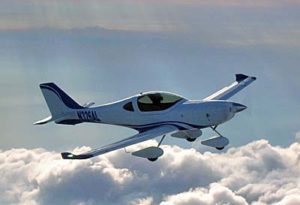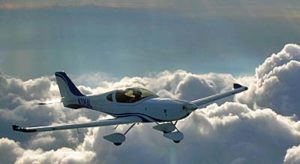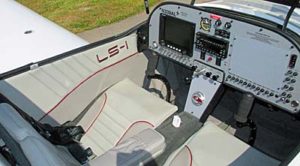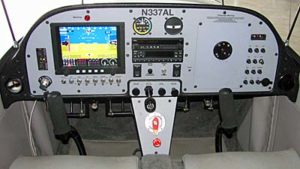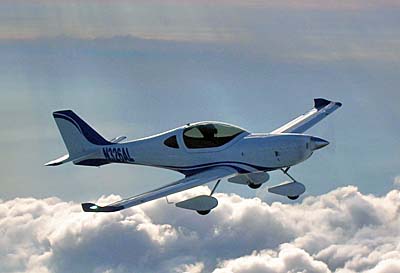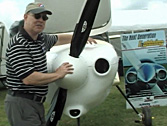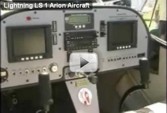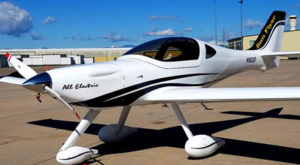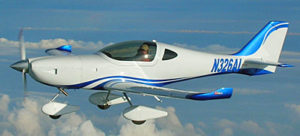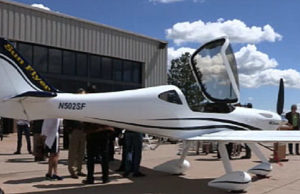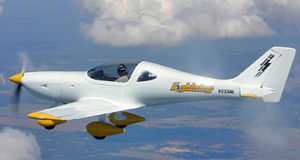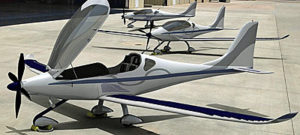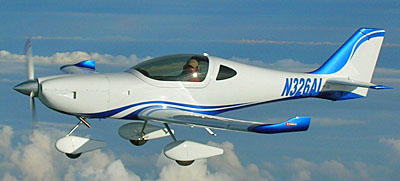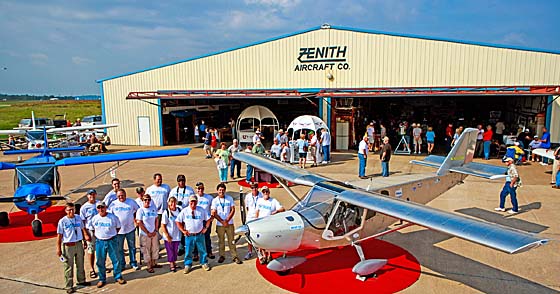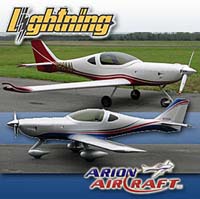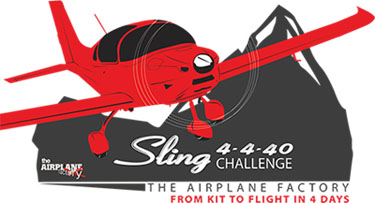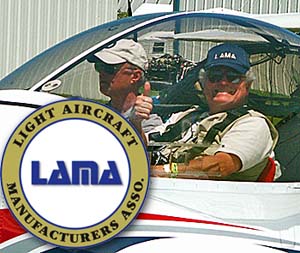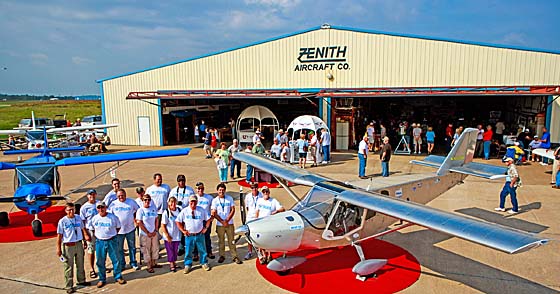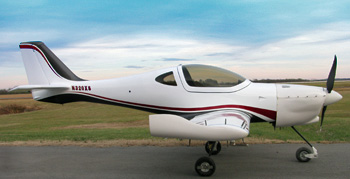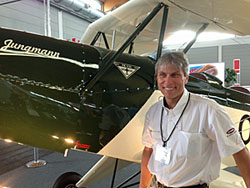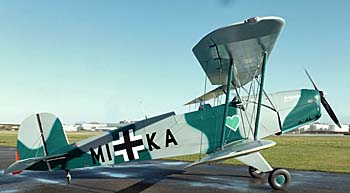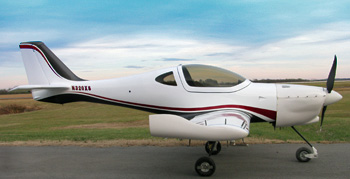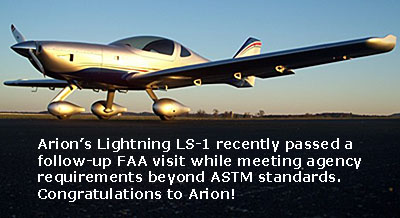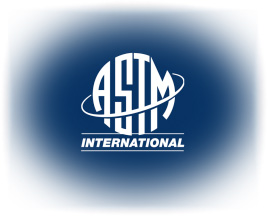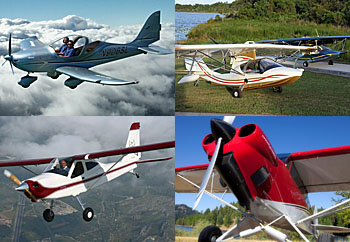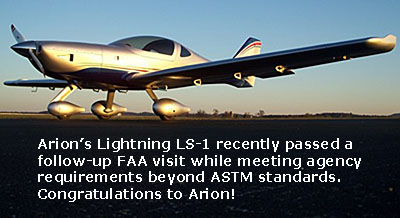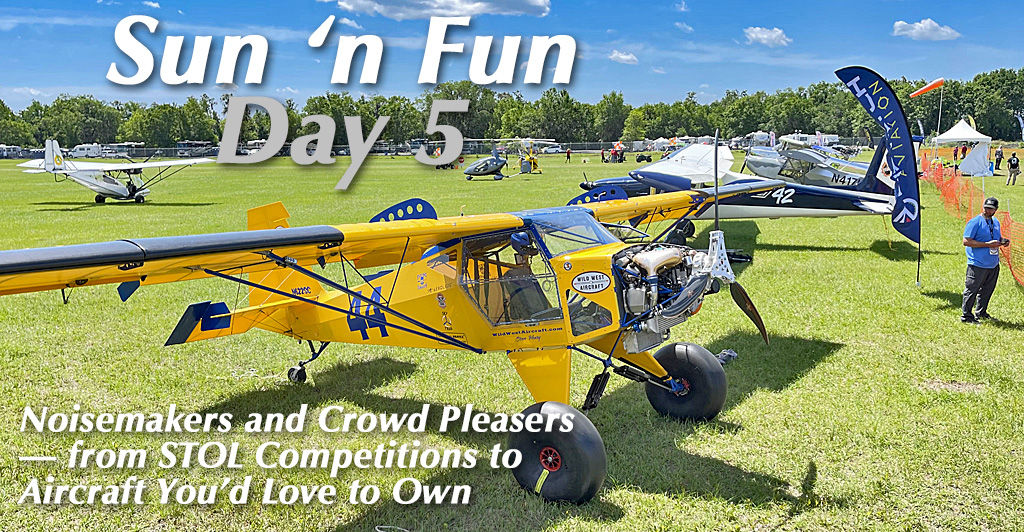
As Sun ‘n Fun 2022 comes to a close, so does my daily reporting. This happens through long days and short nights. My sleep schedule can soon get back to normal. In an article already underway, I will make some forecasts for what we’ll see at AirVenture Oshkosh 2022 based on what was displayed at Sun ‘n Fun 2022. Watch for that in a couple days after I catch my breath. Meanwhile I’m expecting to go fly in the TL Sport Aircraft high wing TL-3000 Sirius and perhaps their retractable tandem Stream. I’m also scheduled to go fly the BOT SC07 Super Cruiser. I hope to have reports on these later in April. Meanwhile, here’s a final daily report from Sun ‘n Fun 2022… Savannah by ICP What is it about orange? Several people told Savannah rep’ Walter della Nebia that it attracted them. I felt similarly. I can’t explain it but the show airplane certainly looked great and drew plenty of visitors.


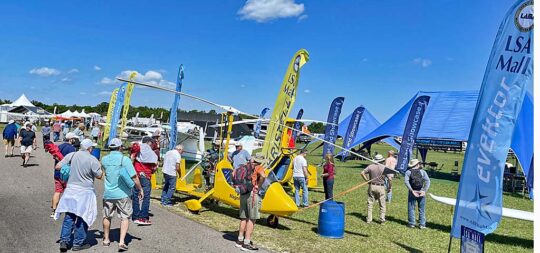
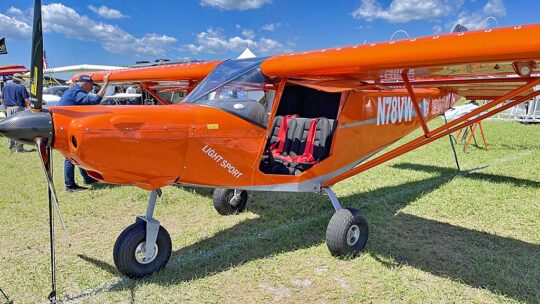
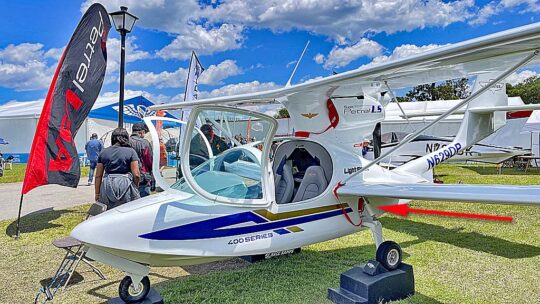
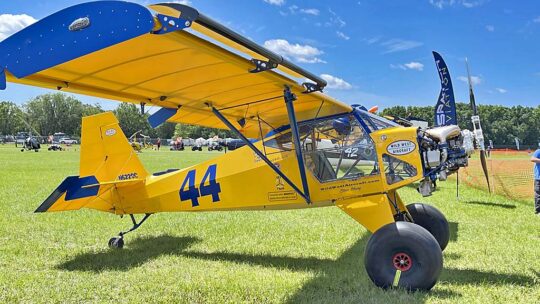
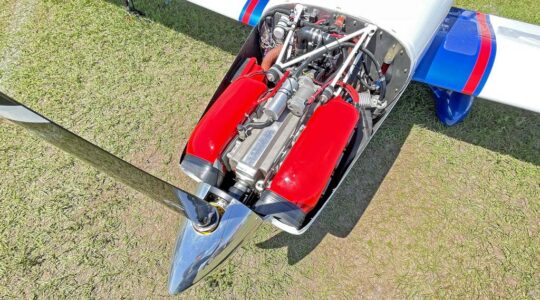
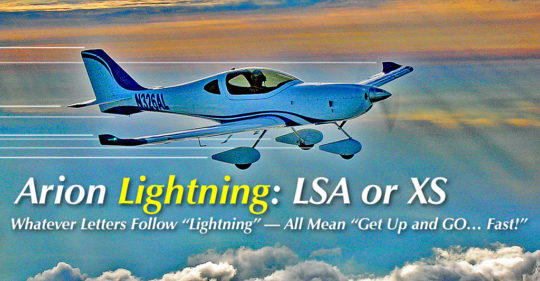 While most light aircraft producers concentrate on either kits or fully-built, a few swing both ways. Some builders unwilling to experiment with two very distinct business models permitted others to contract build a fully-built version while they focus entirely on kit building. Few have managed to do well with both endeavors but Arion seems to have solved the challenges.
Arguably the shapeliest and smoothest aircraft in either the kit or RTF space is Arion Aircraft's Lightning series. Nearly everyone agrees these qualify as fast-when-sitting-still types. Even one of the many electric airplane wannabe producers,
While most light aircraft producers concentrate on either kits or fully-built, a few swing both ways. Some builders unwilling to experiment with two very distinct business models permitted others to contract build a fully-built version while they focus entirely on kit building. Few have managed to do well with both endeavors but Arion seems to have solved the challenges.
Arguably the shapeliest and smoothest aircraft in either the kit or RTF space is Arion Aircraft's Lightning series. Nearly everyone agrees these qualify as fast-when-sitting-still types. Even one of the many electric airplane wannabe producers, 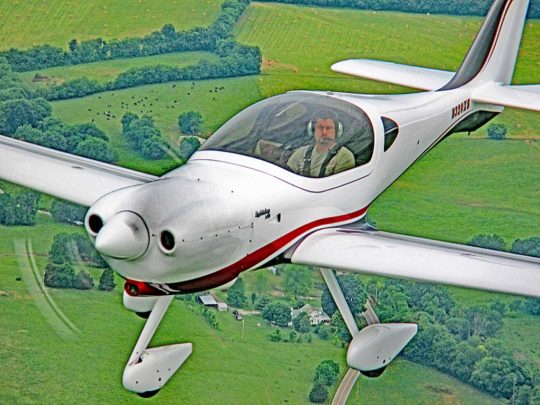 Yet aviation’s leading draw may be going fast as more is always better, right?
Indeed, one reason Arion makes a kit as well as their LS-1 Light-Sport model is because then they can access the excellent speed potential of this slick design.
Let the drooling begin over these beautifully-contoured flying machines that can race 135 to 190 miles an hour for a fairly modest investment.
Arion's LS-1 is a complying Light-Sport Aircraft that meets all the parameters and succeeded in passing a detailed FAA audit with flying colors a few years back.
Lightning XS is the Experimental model on which you can install a more powerful engine.
That these handsome aircraft are also 100% designed and manufactured in the USA may be sweet icing on the cake for many readers.
Yet aviation’s leading draw may be going fast as more is always better, right?
Indeed, one reason Arion makes a kit as well as their LS-1 Light-Sport model is because then they can access the excellent speed potential of this slick design.
Let the drooling begin over these beautifully-contoured flying machines that can race 135 to 190 miles an hour for a fairly modest investment.
Arion's LS-1 is a complying Light-Sport Aircraft that meets all the parameters and succeeded in passing a detailed FAA audit with flying colors a few years back.
Lightning XS is the Experimental model on which you can install a more powerful engine.
That these handsome aircraft are also 100% designed and manufactured in the USA may be sweet icing on the cake for many readers.
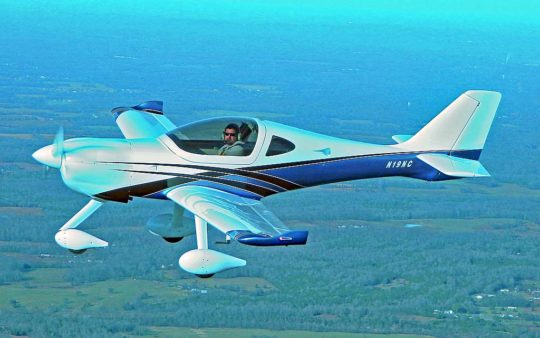 “Lightning LS-1 is designed and built around Jabiru’s powerful 3300 six-cylinder aircraft engine,” noted Arion. “With a displacement of over 200 cubic inches and a direct drive crank, this compact beauty outputs 120 horsepower to deliver performance rarely matched in a Light-Sport Aircraft.” Lightning has no trouble hitting the LSA speed limit of 120 knots (138 mph).
“[However, we] spent more than three years making the kit Lightning as efficient and fast as we could, so slowing down to 120 knots was a complete reversal of our thinking but one that had its benefits,” said principal and designer, Nick Otterback. “By changing the airfoil slightly and adding three feet of wing span, LS-1 stalls below 44 knots clean, giving our aircraft an impressive 52-knot approach speed.”
“Lightning LS-1 is designed and built around Jabiru’s powerful 3300 six-cylinder aircraft engine,” noted Arion. “With a displacement of over 200 cubic inches and a direct drive crank, this compact beauty outputs 120 horsepower to deliver performance rarely matched in a Light-Sport Aircraft.” Lightning has no trouble hitting the LSA speed limit of 120 knots (138 mph).
“[However, we] spent more than three years making the kit Lightning as efficient and fast as we could, so slowing down to 120 knots was a complete reversal of our thinking but one that had its benefits,” said principal and designer, Nick Otterback. “By changing the airfoil slightly and adding three feet of wing span, LS-1 stalls below 44 knots clean, giving our aircraft an impressive 52-knot approach speed.”
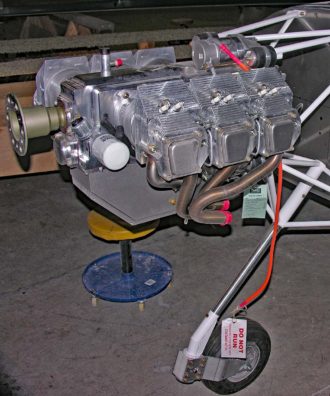 A Jabiru 3300 delivers solo climb in excess of 1,200 fpm and owners can expect 1,000 fpm at its 1,320 pounds gross weight. At cruise speeds of 120 knots, the Jabiru burns a miserly 5.5 gallons an hour. “These are real performance numbers a pilot can rely on; not on a perfect day at sea level or flying around solo, but all loaded up,” stated Nick.
Most companies list useful load, but Arion said the more meaningful payload can be up to 470 pounds. That will allow two big Americans plus some luggage, assuming weight and balance concurs. “Now standard equipped with 40 gallons of fuel, a Lightning pilot can go over 800 nautical miles with VFR reserves,” Nick added.
Lightning XS is sold in kit form. The taller XS with more ground clearance offers a redesigned forward fuselage structure that gives the builder the option to choose engines up to 180 horsepower.
Landing gear offering higher ground clearance permits bigger props on this new kit to allow the speedier model to hit speeds of 160 knots (184 mph) or more. Firewall aft, XS is much the same as the classic Lightning including its 42-inch wide cabin.
A Jabiru 3300 delivers solo climb in excess of 1,200 fpm and owners can expect 1,000 fpm at its 1,320 pounds gross weight. At cruise speeds of 120 knots, the Jabiru burns a miserly 5.5 gallons an hour. “These are real performance numbers a pilot can rely on; not on a perfect day at sea level or flying around solo, but all loaded up,” stated Nick.
Most companies list useful load, but Arion said the more meaningful payload can be up to 470 pounds. That will allow two big Americans plus some luggage, assuming weight and balance concurs. “Now standard equipped with 40 gallons of fuel, a Lightning pilot can go over 800 nautical miles with VFR reserves,” Nick added.
Lightning XS is sold in kit form. The taller XS with more ground clearance offers a redesigned forward fuselage structure that gives the builder the option to choose engines up to 180 horsepower.
Landing gear offering higher ground clearance permits bigger props on this new kit to allow the speedier model to hit speeds of 160 knots (184 mph) or more. Firewall aft, XS is much the same as the classic Lightning including its 42-inch wide cabin.
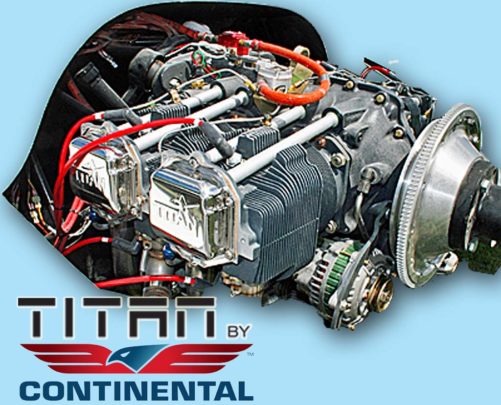
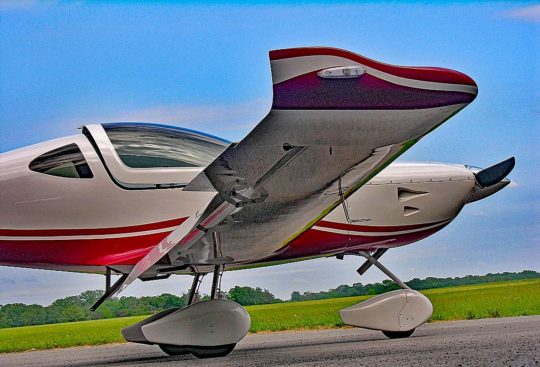 Yet the allure of going fast is great, quickly chewing up the miles en route to your destination. When contemplating a cross country trip of a lengthy distance, fast cannot be too fast. In addition to a higher TAS, we all yearn for a tailwind that will raise our ground speed by another 20 mph.
Lightning with the big Titan engine required a bulging nose cowl, Nick said. Taller landing gear for bigger props, bigger brakes, and 40 gallon fuel tanks are also among some of the features of this kit.
How fast does Lightning XS go? Early testing revealed max cruise at 165 knots (190 mph) TAS at 8,500 feet density altitude at full gross. Climb is a stunning 2,000 fpm. These figures may sound boastful but but reflect real-time experience as recorded by the no-nonsense Nick Otterback.
Yet the allure of going fast is great, quickly chewing up the miles en route to your destination. When contemplating a cross country trip of a lengthy distance, fast cannot be too fast. In addition to a higher TAS, we all yearn for a tailwind that will raise our ground speed by another 20 mph.
Lightning with the big Titan engine required a bulging nose cowl, Nick said. Taller landing gear for bigger props, bigger brakes, and 40 gallon fuel tanks are also among some of the features of this kit.
How fast does Lightning XS go? Early testing revealed max cruise at 165 knots (190 mph) TAS at 8,500 feet density altitude at full gross. Climb is a stunning 2,000 fpm. These figures may sound boastful but but reflect real-time experience as recorded by the no-nonsense Nick Otterback.
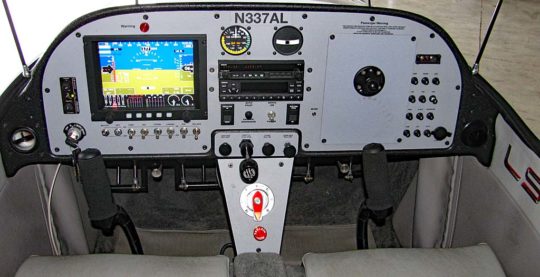 Most buyers may elect more than the basics but the fully-built Light-Sport Aircraft version of Lightning, called LS-1, is base priced at the genuine bargain of $115,000. Yet if you have time, the interest, and enjoy constructing a kit, Lightning XS has a base kit price of $39,900 with the
Most buyers may elect more than the basics but the fully-built Light-Sport Aircraft version of Lightning, called LS-1, is base priced at the genuine bargain of $115,000. Yet if you have time, the interest, and enjoy constructing a kit, Lightning XS has a base kit price of $39,900 with the 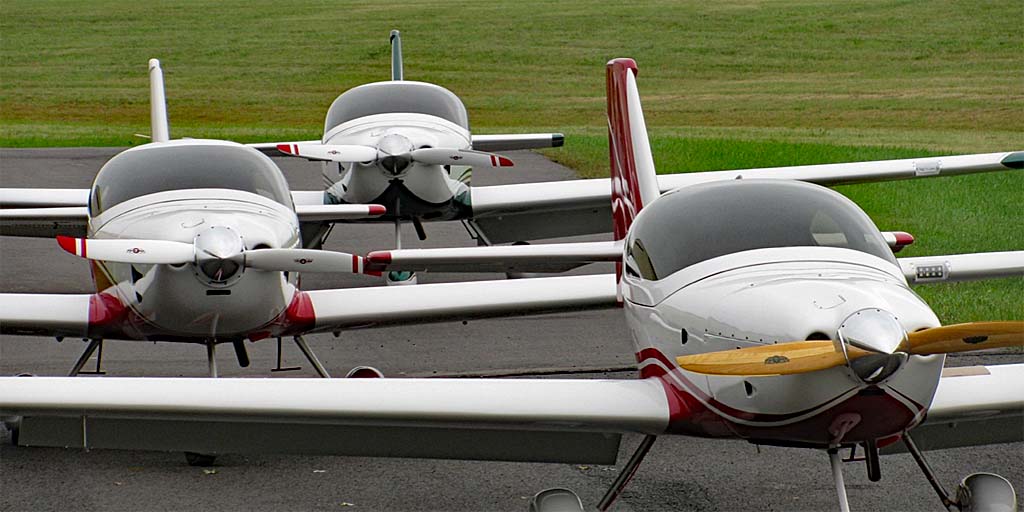
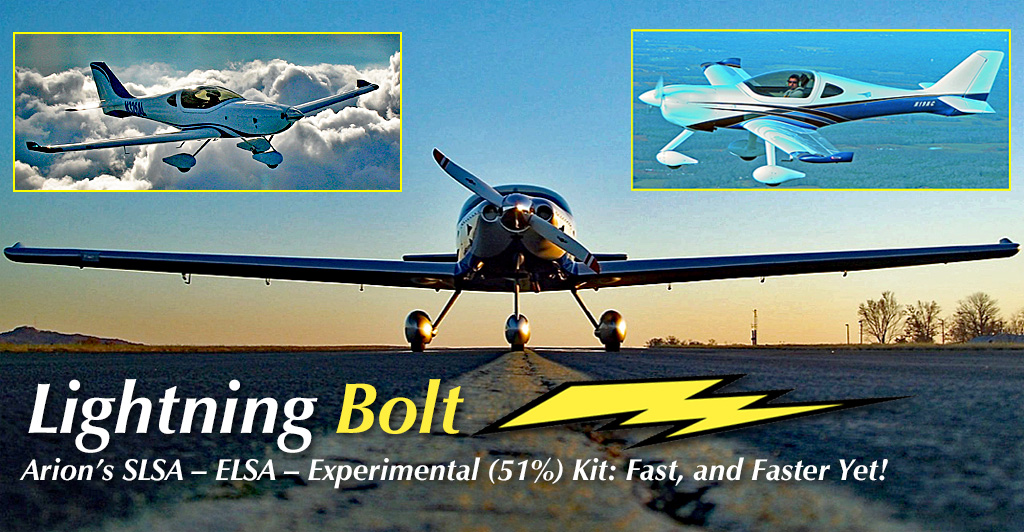
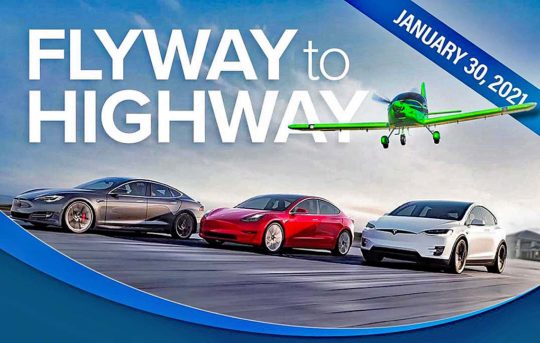 My friends at
My friends at 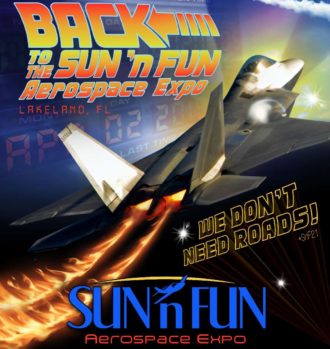 As everyone knows by now,
As everyone knows by now, 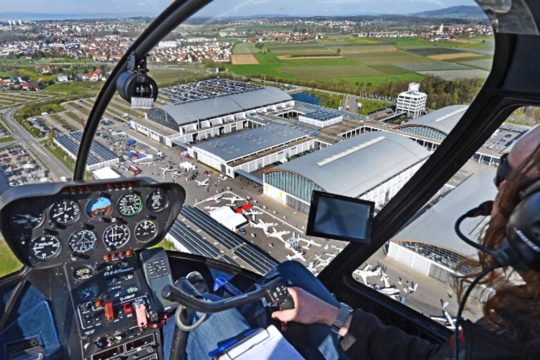 "We have a lot of confirmed exhibitors booked," Roland continued. "We also have exhibitors still waiting with their decision till February.
"Vaccine and warm weather in spring will help additional. Also we have a perfect anti-corona concept which worked very well at the boat show, "Interboot," in September 2020. This marine event is held in the same city convention center as is Aero. Friedrichshafen is located on the huge Lake Constance or Bodensee.
"We will also run our Aero South Africa show in July 2021." Lead by Roland, the Aero team will also visit AirVenture this year so American companies wanting to explore opportunities in Europe can speak to key Aero team members.
"We have a lot of confirmed exhibitors booked," Roland continued. "We also have exhibitors still waiting with their decision till February.
"Vaccine and warm weather in spring will help additional. Also we have a perfect anti-corona concept which worked very well at the boat show, "Interboot," in September 2020. This marine event is held in the same city convention center as is Aero. Friedrichshafen is located on the huge Lake Constance or Bodensee.
"We will also run our Aero South Africa show in July 2021." Lead by Roland, the Aero team will also visit AirVenture this year so American companies wanting to explore opportunities in Europe can speak to key Aero team members.
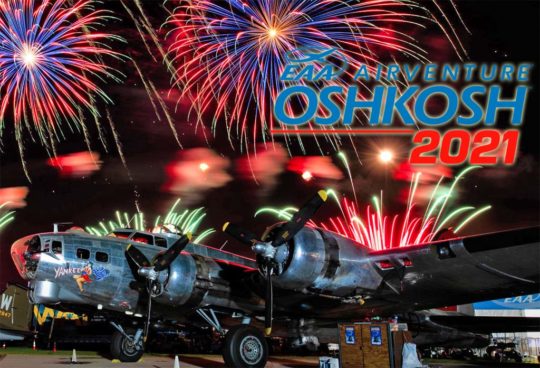 As with Sun 'n Fun, the one-week
As with Sun 'n Fun, the one-week 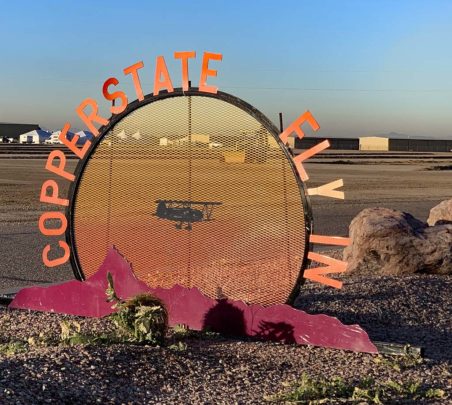 Another Covid dropout is the Copperstate/Buckeye event last held in February of 2020 before the sky fell on everyone. The Phoenix, Arizona-area event — a joint venture between the 48 year-old
Another Covid dropout is the Copperstate/Buckeye event last held in February of 2020 before the sky fell on everyone. The Phoenix, Arizona-area event — a joint venture between the 48 year-old 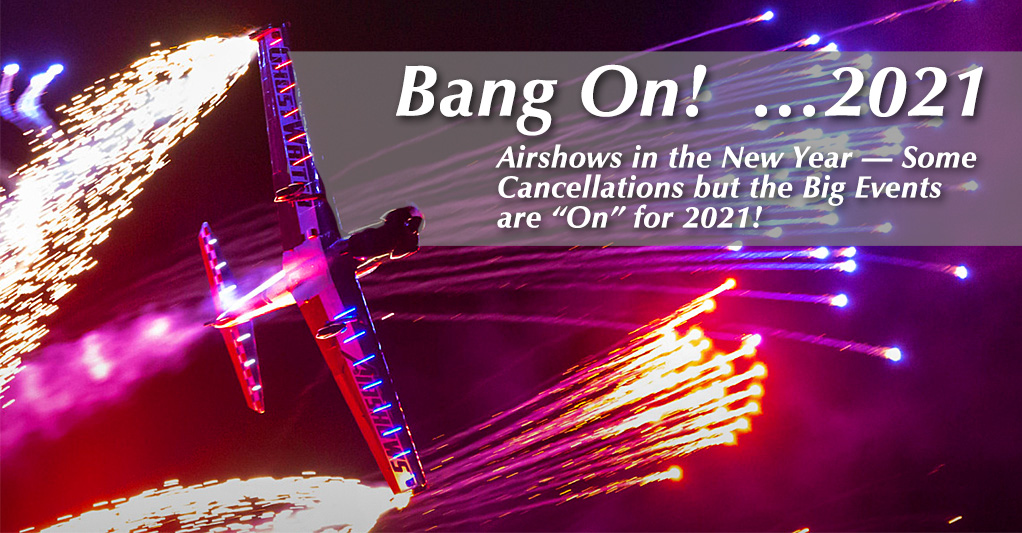
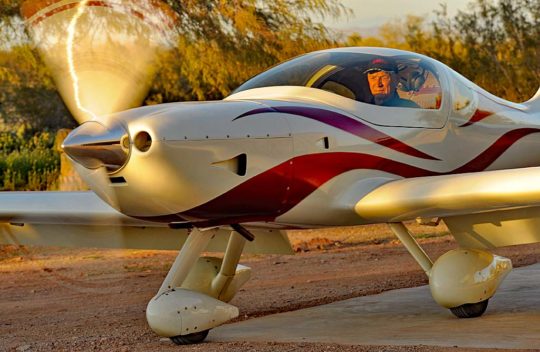
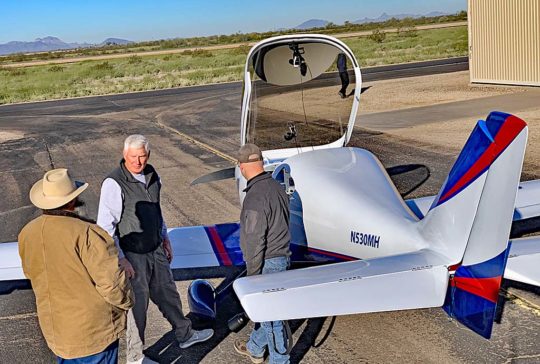
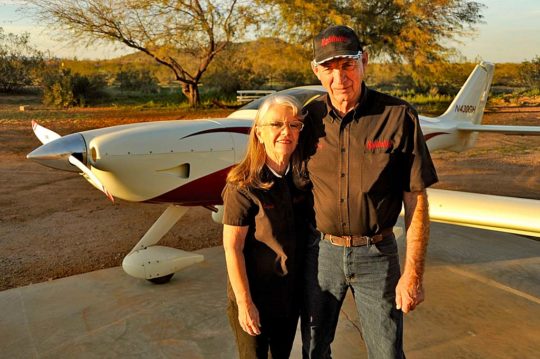
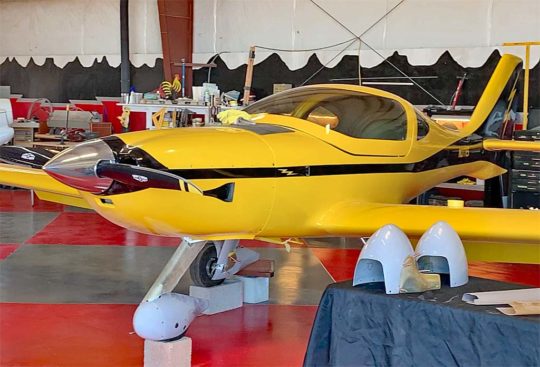 I was told by several builders that Crystal puts out a good food spread and generally these two make you feel at home, even providing bedrooms so you can stay on the job as long as your schedule allows. "Most spend time, return home, and come back to finish the task," explained Greg.
Building a Lightning — Greg observed, "All the primary fiberglass assemblies are preformed and fully fabricated including fuselage halves already bonded together with bulkheads installed; wings are substantially finished with fuel tanks installed; and all flight controls are installed." The kit also includes cowls, the prop spinner, cockpit canopy frame, seats, and baggage floors.
I was told by several builders that Crystal puts out a good food spread and generally these two make you feel at home, even providing bedrooms so you can stay on the job as long as your schedule allows. "Most spend time, return home, and come back to finish the task," explained Greg.
Building a Lightning — Greg observed, "All the primary fiberglass assemblies are preformed and fully fabricated including fuselage halves already bonded together with bulkheads installed; wings are substantially finished with fuel tanks installed; and all flight controls are installed." The kit also includes cowls, the prop spinner, cockpit canopy frame, seats, and baggage floors.
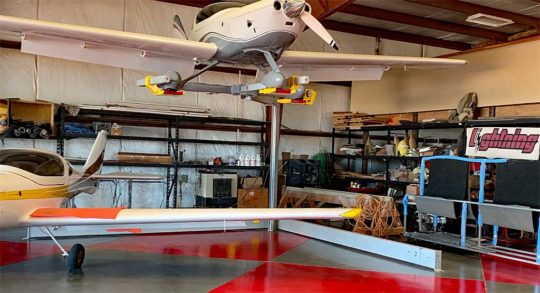 Welded structures, such as the motor mount, spar box assembly, gear leg sockets, and various brackets, are finished and epoxy painted at the factory making them ready to install. Lightning's landing gear is machined from 7075T6 aluminum and ready to fit.
An airplane like Lightning "goes together pretty fast," said Greg, continuing to say that the process takes only about three weeks. If you try this at home, plan on more time, other builders told me. The help the Build Center gives is invaluable plus it's more social than many projects.
The Experimental Aircraft Build Center Arizona also helps builders create the
Welded structures, such as the motor mount, spar box assembly, gear leg sockets, and various brackets, are finished and epoxy painted at the factory making them ready to install. Lightning's landing gear is machined from 7075T6 aluminum and ready to fit.
An airplane like Lightning "goes together pretty fast," said Greg, continuing to say that the process takes only about three weeks. If you try this at home, plan on more time, other builders told me. The help the Build Center gives is invaluable plus it's more social than many projects.
The Experimental Aircraft Build Center Arizona also helps builders create the 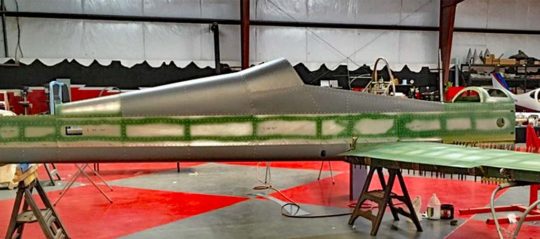

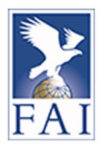 Our most-read story of 2020 was this
Our most-read story of 2020 was this 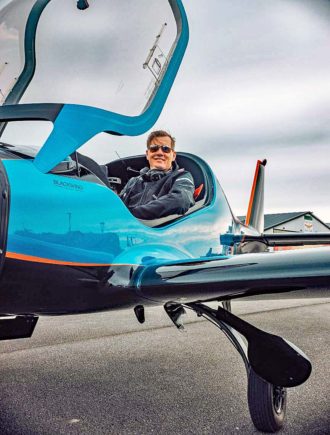 "A few weeks earlier," he continued, "we started high-speed taxi tests. We noticed immediately that this aircraft is something special. The turbo-charged engine (
"A few weeks earlier," he continued, "we started high-speed taxi tests. We noticed immediately that this aircraft is something special. The turbo-charged engine (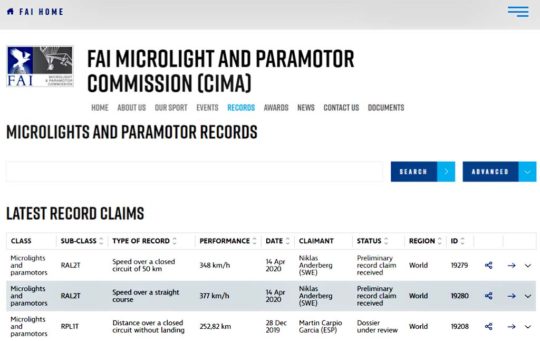 "On Tuesday the weather conditions were perfect. We decided to fly at 10,000 feet. The [FAI] criteria that the course could only be flown once made it even more intense. At the first turn, I climbed some 300 feet, and returning to altitude she accelerated to 219 knots (405 km/h). I felt extremely tense and had a hard time keeping the ball in the center. Overall I am happy that I managed to fly a pretty good course. On the straight course, we got 212 knots average speed. It was great to celebrate the success with my co-pilot Fredrik Lanz, and the rest of the Blackwing team.
"On Tuesday the weather conditions were perfect. We decided to fly at 10,000 feet. The [FAI] criteria that the course could only be flown once made it even more intense. At the first turn, I climbed some 300 feet, and returning to altitude she accelerated to 219 knots (405 km/h). I felt extremely tense and had a hard time keeping the ball in the center. Overall I am happy that I managed to fly a pretty good course. On the straight course, we got 212 knots average speed. It was great to celebrate the success with my co-pilot Fredrik Lanz, and the rest of the Blackwing team.
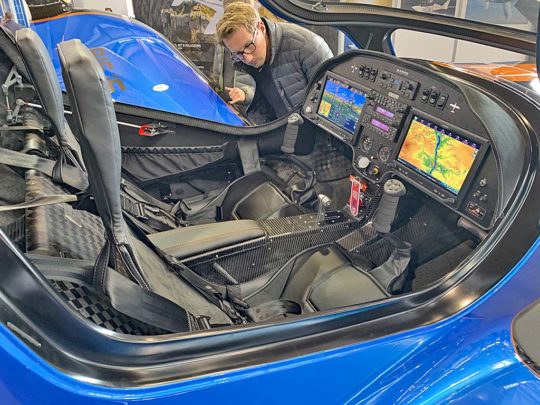 "The flight testing will continue in spring and summer. After 50 hours of flight testing, we can start taking passengers.
"The aircraft used for the record is a standard BW600RG with the Rotax 915iS engine. In order to optimize the drag, we only had one outside antenna and sealed some of the gaps."
Once again, my heartiest congratutions to Niklas, Fredrik, and Team Blackwing, for a job well done!
"The flight testing will continue in spring and summer. After 50 hours of flight testing, we can start taking passengers.
"The aircraft used for the record is a standard BW600RG with the Rotax 915iS engine. In order to optimize the drag, we only had one outside antenna and sealed some of the gaps."
Once again, my heartiest congratutions to Niklas, Fredrik, and Team Blackwing, for a job well done!
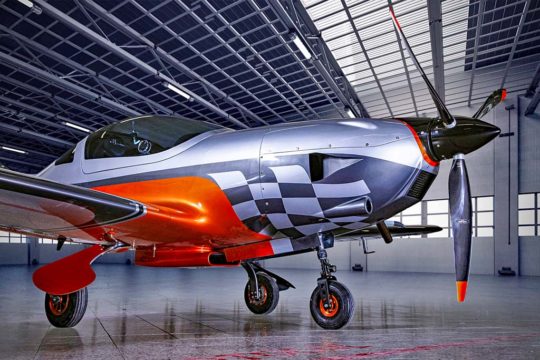 "JMB Aircraft is proud to announce some achievements from the past few months," the company wrote recently. "After more than 100 hours of flight test with two planes, we manage with success to perform a V-dive test reaching an indicated 381 kilometers per hour and 425 km/h (229 knots) true air speed. This enable us to safely increase our VNE up to an indicated 340 kilometers per hour (184 knots)."
On April 25th JMB added, "With all nominal operating parameters, we climbed to FL180 in 13 minutes with one short level off due to a too-fast climb reported by ATC. The conditions were ISO +7 degrees Celsius (45°F) and 600 kilogram MTOW. Our test pilots performed a level flight of several minutes at maximum continuous power and reached 380 km/h (205 knots) true airspeed, breaking the mythical 200 knot barrier."
"JMB Aircraft is proud to announce some achievements from the past few months," the company wrote recently. "After more than 100 hours of flight test with two planes, we manage with success to perform a V-dive test reaching an indicated 381 kilometers per hour and 425 km/h (229 knots) true air speed. This enable us to safely increase our VNE up to an indicated 340 kilometers per hour (184 knots)."
On April 25th JMB added, "With all nominal operating parameters, we climbed to FL180 in 13 minutes with one short level off due to a too-fast climb reported by ATC. The conditions were ISO +7 degrees Celsius (45°F) and 600 kilogram MTOW. Our test pilots performed a level flight of several minutes at maximum continuous power and reached 380 km/h (205 knots) true airspeed, breaking the mythical 200 knot barrier."
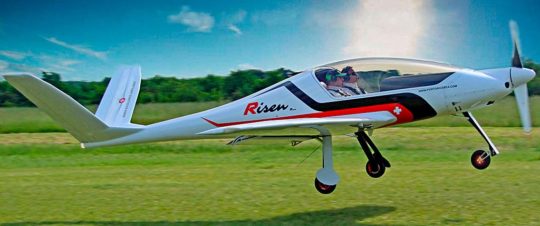 I suspect the LSA-like airspeed race isn't over yet, especially given the previous record holder — Risen, from a formerly Swiss, now Italian company renamed as
I suspect the LSA-like airspeed race isn't over yet, especially given the previous record holder — Risen, from a formerly Swiss, now Italian company renamed as 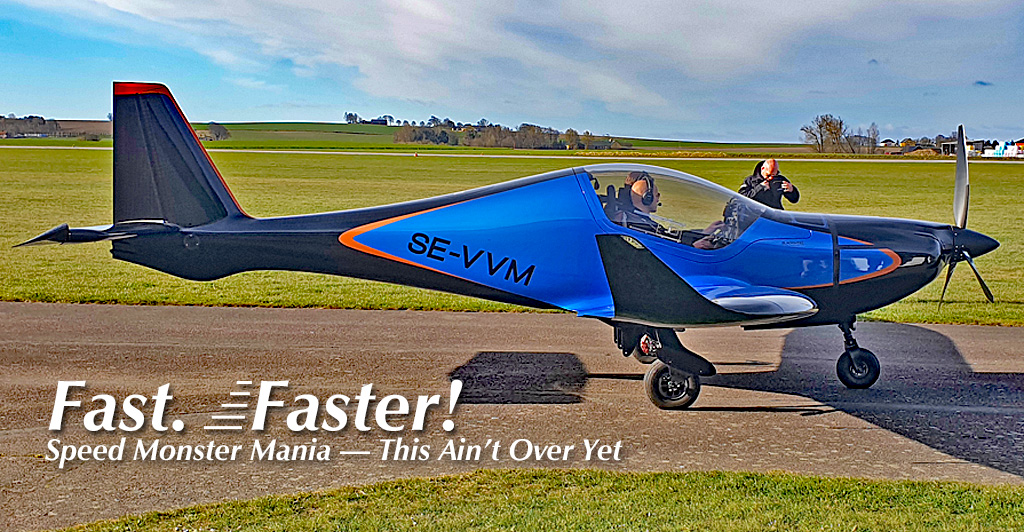
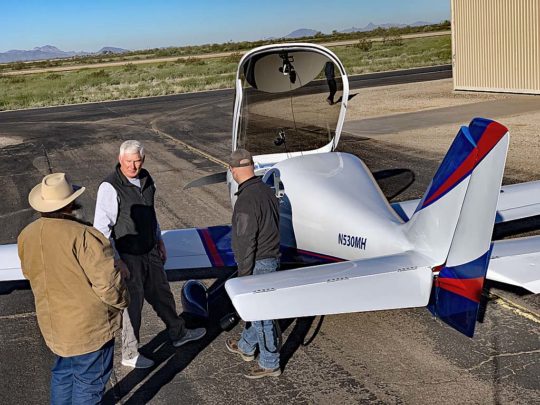 To start this year's event,
To start this year's event, 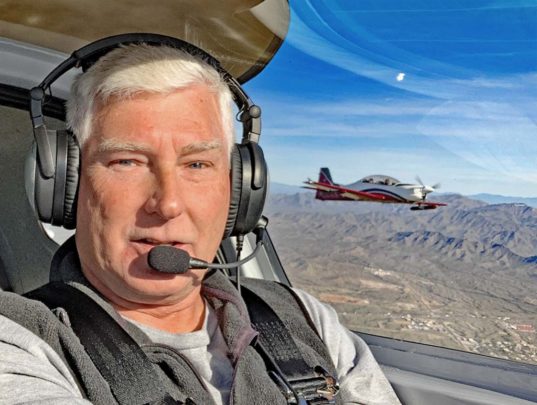
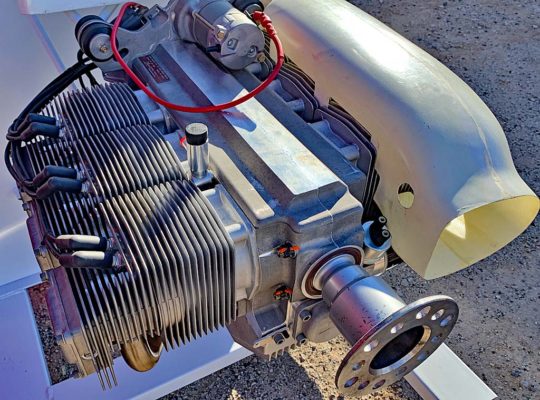
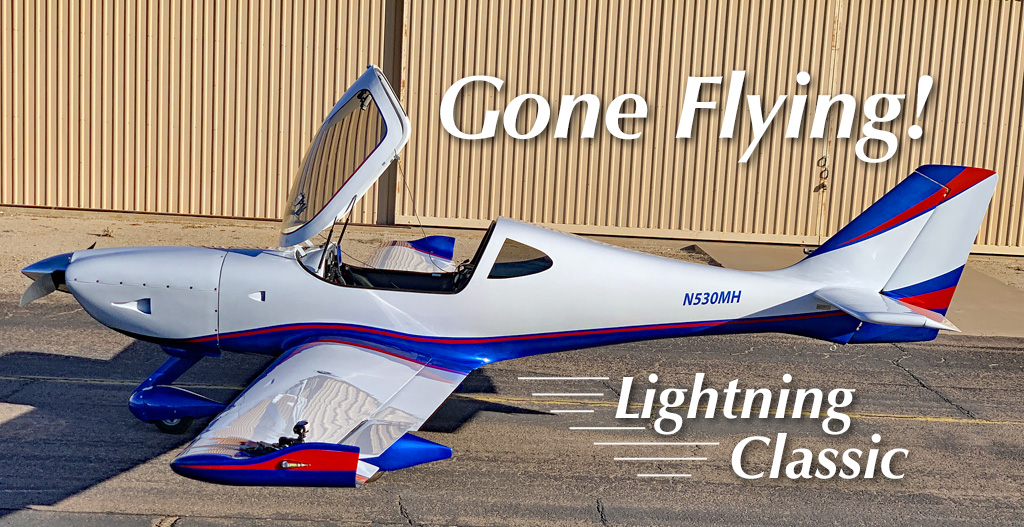
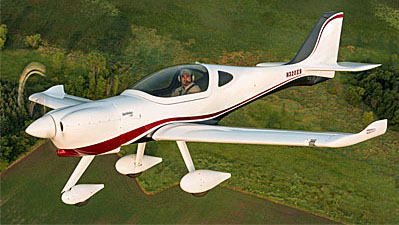 If that's an accurate assessment, then let the drooling begin over this beautifully contoured flying machine that can race 135 to 185 miles an hour for a fairly modest investment. I'm writing about Lightning from
If that's an accurate assessment, then let the drooling begin over this beautifully contoured flying machine that can race 135 to 185 miles an hour for a fairly modest investment. I'm writing about Lightning from 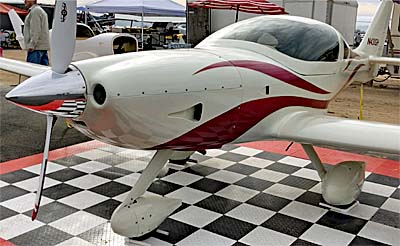 "Lightning LS-1 is designed and built around Jabiru’s powerful 3300 aircraft engine," noted Arion. "With a displacement of over 200 cubic inches and a direct drive crank, this little beauty has over 120 horsepower on tap for performance rarely matched in a Light-Sport Aircraft." Lightning has no trouble hitting the LSA speed limit of 120 knots (138 mph).
"[We] spent more than three years making the kit Lightning as efficient and fast as we could, so slowing down to 120 knots was a complete reversal of thinking that had its benefits," said principal and designer, Nick Otterback. "By changing the airfoil slightly and adding three feet of wing span, LS-1 stalls below 44 knots clean, giving our aircraft an impressive 52 knot approach speed." Solo climb is in excess of 1,200 fpm and owners can expect 1,000 fpm at 1,320 pounds. At cruise speeds of 120 knots range fuel burns runs 5.5 gallons an hour. "These are real performance numbers a pilot can rely on; not on a perfect day at sea level or flying around solo, but all loaded up," stated Nick.
"Lightning LS-1 is designed and built around Jabiru’s powerful 3300 aircraft engine," noted Arion. "With a displacement of over 200 cubic inches and a direct drive crank, this little beauty has over 120 horsepower on tap for performance rarely matched in a Light-Sport Aircraft." Lightning has no trouble hitting the LSA speed limit of 120 knots (138 mph).
"[We] spent more than three years making the kit Lightning as efficient and fast as we could, so slowing down to 120 knots was a complete reversal of thinking that had its benefits," said principal and designer, Nick Otterback. "By changing the airfoil slightly and adding three feet of wing span, LS-1 stalls below 44 knots clean, giving our aircraft an impressive 52 knot approach speed." Solo climb is in excess of 1,200 fpm and owners can expect 1,000 fpm at 1,320 pounds. At cruise speeds of 120 knots range fuel burns runs 5.5 gallons an hour. "These are real performance numbers a pilot can rely on; not on a perfect day at sea level or flying around solo, but all loaded up," stated Nick.
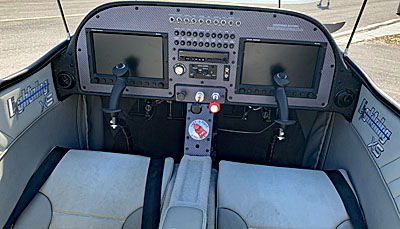 Most companies list useful load, but Arion said the more meaningful payload can be up to 470 pounds. That will allow two big Americans plus some luggage assuming weight and balance confirms. "Now standard equipped with 40 gallons of fuel, you can go over 800 nautical miles with VFR reserves," Nick added.
Lightning is offered only in tricycle-gear configuration — as most pilots prefer — but a taildragger version has been created by a builder.
Most companies list useful load, but Arion said the more meaningful payload can be up to 470 pounds. That will allow two big Americans plus some luggage assuming weight and balance confirms. "Now standard equipped with 40 gallons of fuel, you can go over 800 nautical miles with VFR reserves," Nick added.
Lightning is offered only in tricycle-gear configuration — as most pilots prefer — but a taildragger version has been created by a builder. 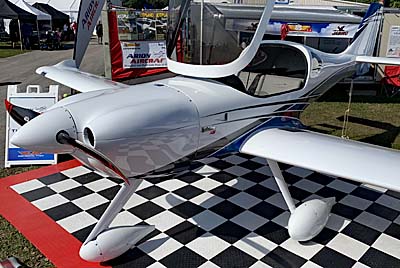 Taller landing gear permits bigger props on this new kit to allow the speedier model to hit speeds of 160 knots (184 mph). Firewall aft XS is much the same as the classic Lightning including its 42-inch wide cabin.
Arion also offers several propeller choices for the engines above. "For fixed pitch we like Sensenich wood or composite ground adjustable props," said Arion. "We have tested in-flight adjustable props as well. For the Titan or Lycoming types, Whirlwind aviation makes the RV200 series light weight CS prop. For Jabiru or UL Power we have tested the Airmaster series." Installation of an in-flight adjustable prop can increase performance but, of course, builders must plan for the extra weight on the nose during the build process. Pricing and other questions are answered on Arion's
Taller landing gear permits bigger props on this new kit to allow the speedier model to hit speeds of 160 knots (184 mph). Firewall aft XS is much the same as the classic Lightning including its 42-inch wide cabin.
Arion also offers several propeller choices for the engines above. "For fixed pitch we like Sensenich wood or composite ground adjustable props," said Arion. "We have tested in-flight adjustable props as well. For the Titan or Lycoming types, Whirlwind aviation makes the RV200 series light weight CS prop. For Jabiru or UL Power we have tested the Airmaster series." Installation of an in-flight adjustable prop can increase performance but, of course, builders must plan for the extra weight on the nose during the build process. Pricing and other questions are answered on Arion's 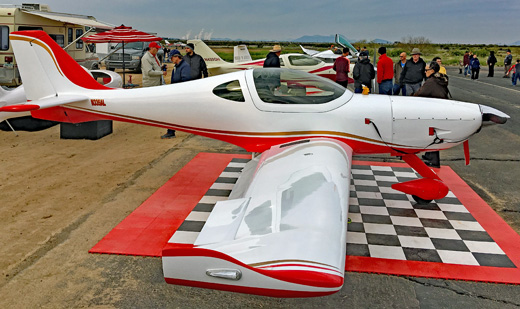
 Could 2020 bring a new description of aircraft under the LSA banner? Could this include greater capabilities and opportunities? Could you get the airplane you want for less? When?! Yes, yes, and yes …but probably not as soon as you want. The regulation may not emerge in 2020 but whatever the announcement date, what could be coming and how will it affect you?
We still have more to report from Sun 'n Fun and Aero 2019 — and we will! — but numerous conversations at each event have pointed to another topic of keen interest to many: "What's coming and when?"
Manufacturers of aircraft are among the most interested to hear more, but so are individual pilots and all the organizations and other enterprises that serve the recreational aircraft market. In this article, let's take a closer look. (More articles will follow.)
Could 2020 bring a new description of aircraft under the LSA banner? Could this include greater capabilities and opportunities? Could you get the airplane you want for less? When?! Yes, yes, and yes …but probably not as soon as you want. The regulation may not emerge in 2020 but whatever the announcement date, what could be coming and how will it affect you?
We still have more to report from Sun 'n Fun and Aero 2019 — and we will! — but numerous conversations at each event have pointed to another topic of keen interest to many: "What's coming and when?"
Manufacturers of aircraft are among the most interested to hear more, but so are individual pilots and all the organizations and other enterprises that serve the recreational aircraft market. In this article, let's take a closer look. (More articles will follow.)
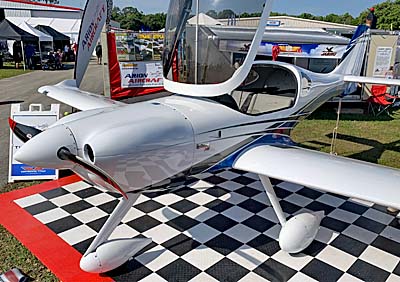
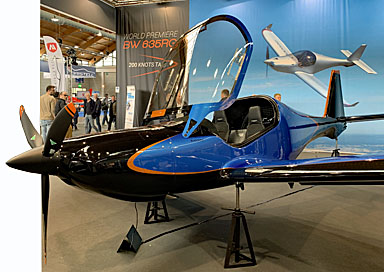
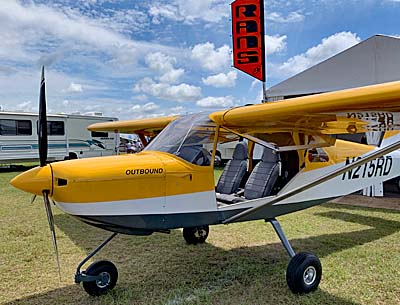
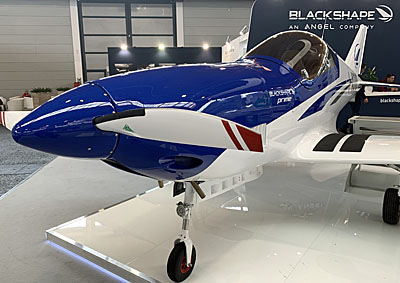
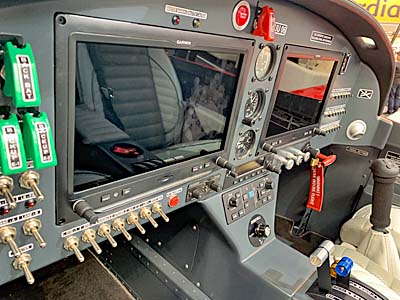
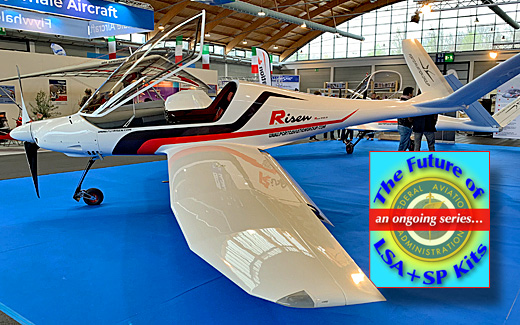
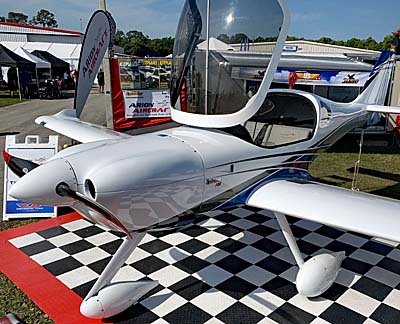 Now, ultralight pilots (me, for instance) will go on enthusiastically about the beauty of flying slowly, of drifting leisurely over the landscape at a "human speed" that allows enough time to enjoy the expanse of an aerial view of your surroundings. Open cockpit flying adds to the joy facilitated by low airspeeds.
Yet the allure of going fast is great, zipping over the countryside. I get that and when contemplating a cross country trip of any real distance, fast cannot be too fast. In addition to a higher TAS, we all yearn for a tailwind that will raise our speed by another 20 mph.
Now, ultralight pilots (me, for instance) will go on enthusiastically about the beauty of flying slowly, of drifting leisurely over the landscape at a "human speed" that allows enough time to enjoy the expanse of an aerial view of your surroundings. Open cockpit flying adds to the joy facilitated by low airspeeds.
Yet the allure of going fast is great, zipping over the countryside. I get that and when contemplating a cross country trip of any real distance, fast cannot be too fast. In addition to a higher TAS, we all yearn for a tailwind that will raise our speed by another 20 mph.
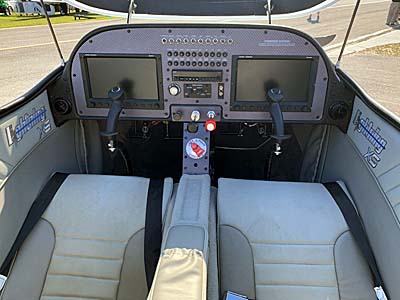 Lightning has enjoyed and continues to execute a good run but like many designers, Nick felt the design could handle more speed. He set out to bump the numbers by installing a Titan X340 with 180 horsepower. This triggered other changes such as a new cowl to accommodate the powerplant.
"Our Lightning XS kit has a redesigned forward fuselage structure that gives the builder the option to choose engines up to 180 horsepower," said Nick. "Taller landing gear for bigger props, bigger brakes, and 20 gallon fuel tanks are among some of the features of this new kit."
How fast does Lightning XS go? Testing is not complete yet; it recently took to the air. However, Arion is calculating 165 knots (190 mph) TAS at 8,500 feet density altitude at full gross. Climb is a stunning 2,000 fpm.
Of course Lightning XS is not a Light-Sport Aircraft and will require a Private or better certificate plus a medical.
Lightning has enjoyed and continues to execute a good run but like many designers, Nick felt the design could handle more speed. He set out to bump the numbers by installing a Titan X340 with 180 horsepower. This triggered other changes such as a new cowl to accommodate the powerplant.
"Our Lightning XS kit has a redesigned forward fuselage structure that gives the builder the option to choose engines up to 180 horsepower," said Nick. "Taller landing gear for bigger props, bigger brakes, and 20 gallon fuel tanks are among some of the features of this new kit."
How fast does Lightning XS go? Testing is not complete yet; it recently took to the air. However, Arion is calculating 165 knots (190 mph) TAS at 8,500 feet density altitude at full gross. Climb is a stunning 2,000 fpm.
Of course Lightning XS is not a Light-Sport Aircraft and will require a Private or better certificate plus a medical.
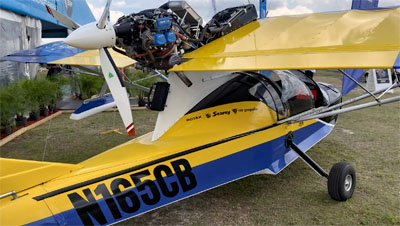
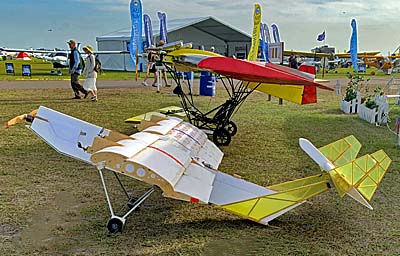 Brian's last full-sized project, the
Brian's last full-sized project, the 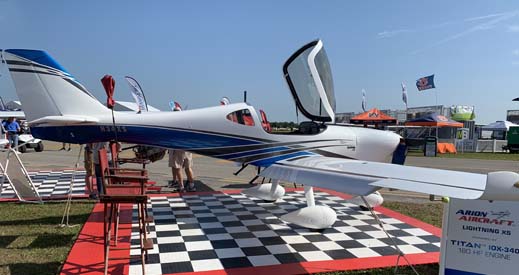
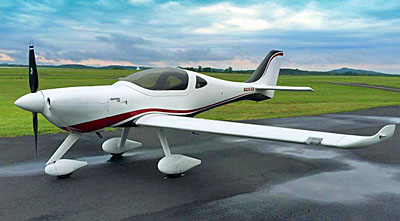 I readily admit I find
I readily admit I find 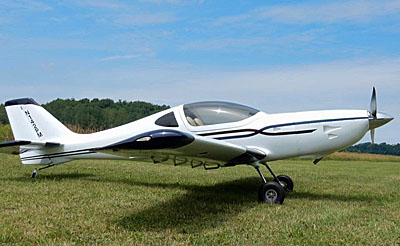 "My wife, Kathy, and I live in Chautauqua County in western New York. I've flown a converted Piper Colt out of a small grass strip airport (D79) at the end of Chautauqua Lake since 2004. After a few years , I thought I would like something a little 'zippier.'
"In 2008 I came across the Lightning at Oshkosh. I loved the look and specs for being a Light-Sport. I spoke with company boss and designer, Nick Otterback, and asked about the possibility of a tail wheel version. He thought that might be a possibility down the road.
"I saw Nick again the next year but still no tail wheel. However, I did schedule a demo ride. I was sold and bought my kit."
About this project, Nick wrote,
"My wife, Kathy, and I live in Chautauqua County in western New York. I've flown a converted Piper Colt out of a small grass strip airport (D79) at the end of Chautauqua Lake since 2004. After a few years , I thought I would like something a little 'zippier.'
"In 2008 I came across the Lightning at Oshkosh. I loved the look and specs for being a Light-Sport. I spoke with company boss and designer, Nick Otterback, and asked about the possibility of a tail wheel version. He thought that might be a possibility down the road.
"I saw Nick again the next year but still no tail wheel. However, I did schedule a demo ride. I was sold and bought my kit."
About this project, Nick wrote, 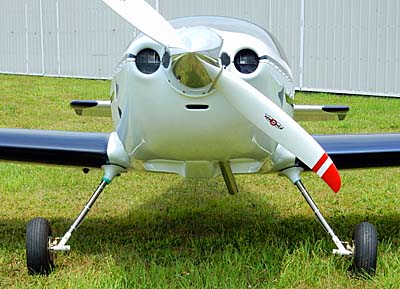 "While in construction, I decided I would commit to the tail wheel conversion. At the same time, just to see if it could be done, I decided to modify Lightning's controls to create center stick, another thing the factory had not done. I thought this would make entry easier and also let my wife have her own uncluttered space. This was my first project and at the rate I was going, I figured I wasn't going be doing too many of these so I wanted to do this one exactly how I wanted it.
"I contacted Nick and got some better clarity on center of gravity and possible wheel positions and applied them to Pazmany's formulas until everything came in within the guidelines. Theoretical weight and balance and prop clearance were also considerations. I am a retired machinist, so the metal work and fixturing was very familiar to me although I did have to 'tune' up my welding for about a year and a half before I attempted the landing gear legs and supports.
"While in construction, I decided I would commit to the tail wheel conversion. At the same time, just to see if it could be done, I decided to modify Lightning's controls to create center stick, another thing the factory had not done. I thought this would make entry easier and also let my wife have her own uncluttered space. This was my first project and at the rate I was going, I figured I wasn't going be doing too many of these so I wanted to do this one exactly how I wanted it.
"I contacted Nick and got some better clarity on center of gravity and possible wheel positions and applied them to Pazmany's formulas until everything came in within the guidelines. Theoretical weight and balance and prop clearance were also considerations. I am a retired machinist, so the metal work and fixturing was very familiar to me although I did have to 'tune' up my welding for about a year and a half before I attempted the landing gear legs and supports.
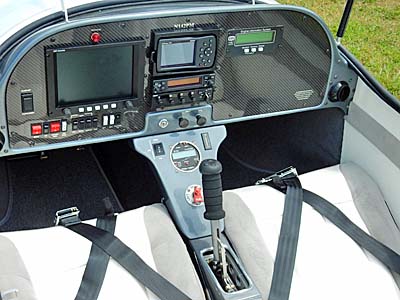 "At this time I've got about 2,500 hours into it. Although the empty CG moved a little more than an inch aft with the tail wheel, we are still well within the envelope and Light-Sport limit with two people and 20 gallons of fuel.
"I'm using the Jabiru 3300 and without the nose wheel, I hope to add a few miles an hour in cruise and lose a couple on landing."
Wisely, Mike hasn't decided if he'll do the test flight on his Lightning TD. "I've spent more time building than flying lately," Mike admitted. This is a common, smart move… to let a person other than the builder do the test flight.
Mike continued, "Buzz Rich, who is very involved with Nick at Lightning and has a ton of time in the Lightning and tail wheels, has offered to do the first flights and it would be a kick to get his take on my project if we can work it out. I'll be flying amateur built but Lightning TD will come within Light-Sport limits.
"At this time I've got about 2,500 hours into it. Although the empty CG moved a little more than an inch aft with the tail wheel, we are still well within the envelope and Light-Sport limit with two people and 20 gallons of fuel.
"I'm using the Jabiru 3300 and without the nose wheel, I hope to add a few miles an hour in cruise and lose a couple on landing."
Wisely, Mike hasn't decided if he'll do the test flight on his Lightning TD. "I've spent more time building than flying lately," Mike admitted. This is a common, smart move… to let a person other than the builder do the test flight.
Mike continued, "Buzz Rich, who is very involved with Nick at Lightning and has a ton of time in the Lightning and tail wheels, has offered to do the first flights and it would be a kick to get his take on my project if we can work it out. I'll be flying amateur built but Lightning TD will come within Light-Sport limits.
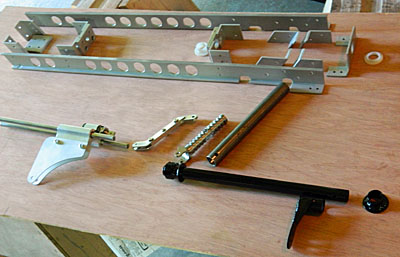 "This is way more plane than I could have ever imagined for myself."
Make is both clever with technical skills and is diplomatic as he added an essential thank-you note.
"Thanks to my wife Kathy for the great seats she sewed, for helping me move, lift, hold, and generally assist in the barn and for tolerating airplane parts in rooms around the house for seven years now. In fact, I think she misses the propeller not being in the living room anymore."
Mike also added thanks to Nick, Mark, and Buzz at Arion Aircraft.
So, now that you know Mike's story, what will you do this weekend?
"This is way more plane than I could have ever imagined for myself."
Make is both clever with technical skills and is diplomatic as he added an essential thank-you note.
"Thanks to my wife Kathy for the great seats she sewed, for helping me move, lift, hold, and generally assist in the barn and for tolerating airplane parts in rooms around the house for seven years now. In fact, I think she misses the propeller not being in the living room anymore."
Mike also added thanks to Nick, Mark, and Buzz at Arion Aircraft.
So, now that you know Mike's story, what will you do this weekend?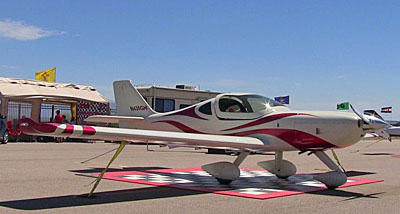
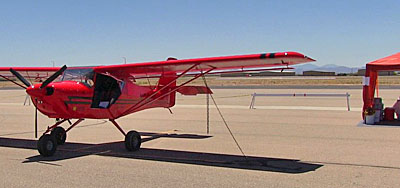
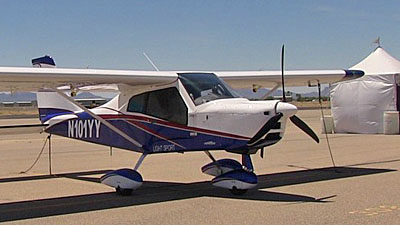
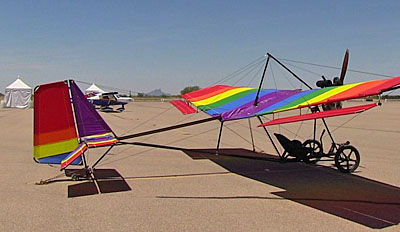
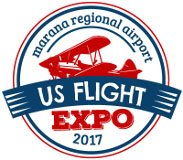 Welcome to the new US Flight Expo. Less like Sun 'n Fun and AirVenture with their airshow components and vast acreage of airplanes of all types, US Flight Expo will perhaps more closely resemble
Welcome to the new US Flight Expo. Less like Sun 'n Fun and AirVenture with their airshow components and vast acreage of airplanes of all types, US Flight Expo will perhaps more closely resemble 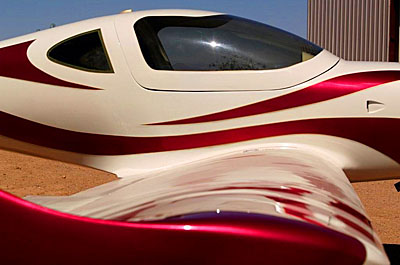 Organized by Arion Lightning dealer and light aviation enthusiast Greg Hobbs, the sector we usually cover here on ByDanJohnson.com looks to be well represented. Consider the list below. The other shows are all in the eastern U.S., a phenomenon I've discussed with many people over the years. For whatever reason, no major show has come to dominate the expansive western U.S.
Organized by Arion Lightning dealer and light aviation enthusiast Greg Hobbs, the sector we usually cover here on ByDanJohnson.com looks to be well represented. Consider the list below. The other shows are all in the eastern U.S., a phenomenon I've discussed with many people over the years. For whatever reason, no major show has come to dominate the expansive western U.S.
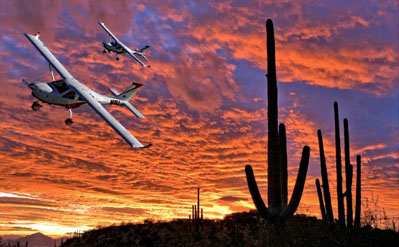 Vast Western landscapes can be incredibly beautiful as the photos show. Greg is a hardworking fellow who has been laboring to build this event for the benefit of airplane enthusiasts and the vendors who serve them. He said early May is pleasantly warm and temperate with deep blue skies.
A video interview with Greg at Sun 'n Fun will be ready shortly but if you want to find out more soon, here's some contacts:
Vast Western landscapes can be incredibly beautiful as the photos show. Greg is a hardworking fellow who has been laboring to build this event for the benefit of airplane enthusiasts and the vendors who serve them. He said early May is pleasantly warm and temperate with deep blue skies.
A video interview with Greg at Sun 'n Fun will be ready shortly but if you want to find out more soon, here's some contacts:
